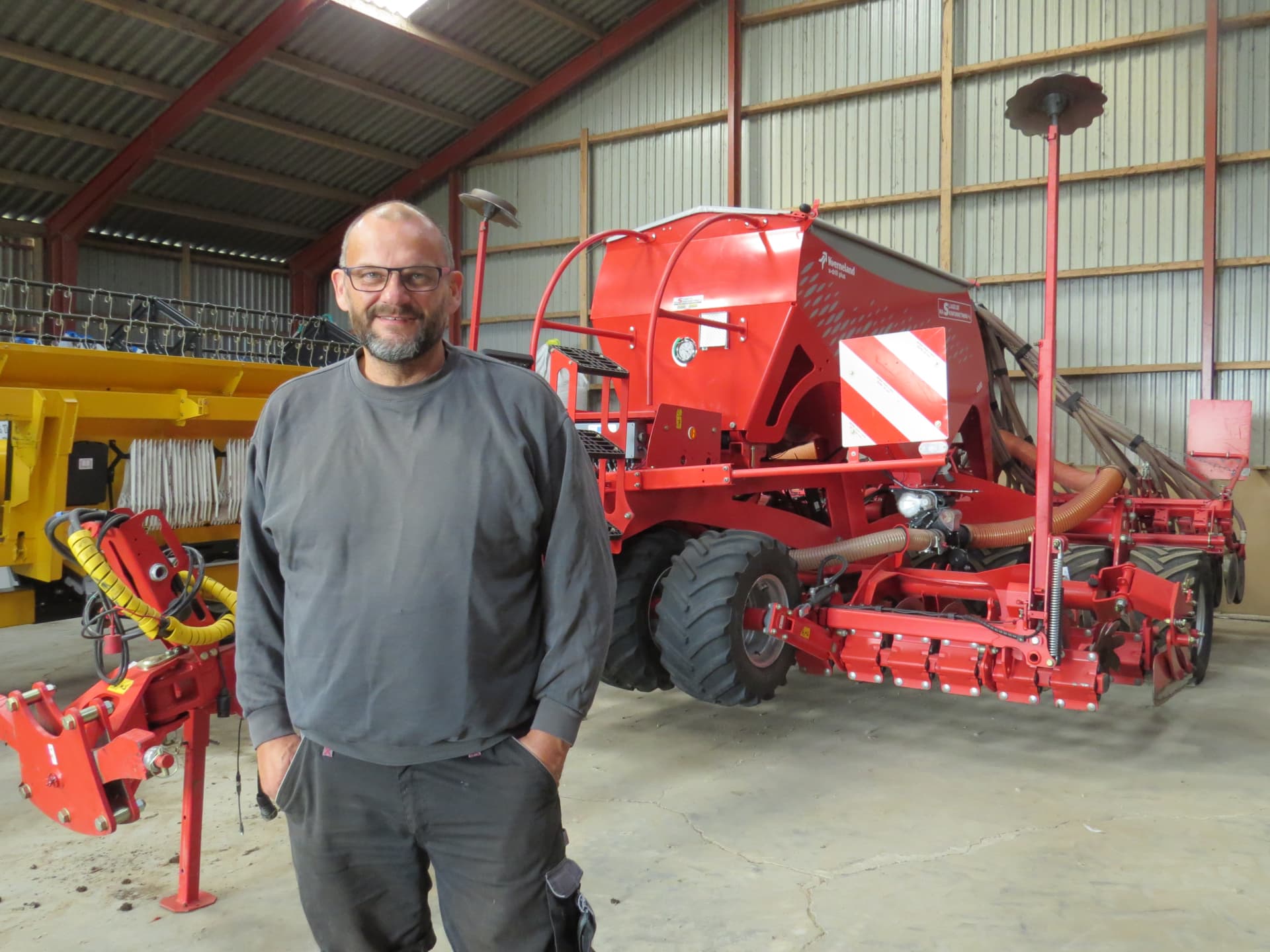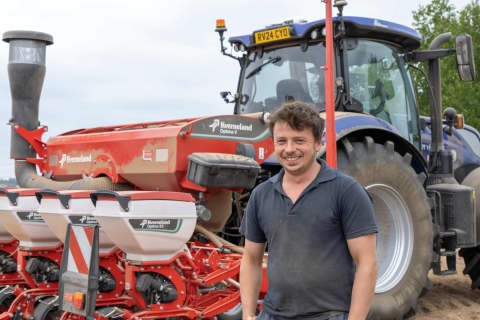Spring fertilization is done according to a germination map from the autumn, and many chemicals are saved by spraying from an allocation map. All with equipment from Kverneland.
"You can practise precision farming even if you're not an IT geek. And precision farming can also be profitable even if you don't practise large-scale crop farming," says Søren Gammelby.
He runs I/S Gammelby in Denmark together with his brother, Thomas Gammelby. The farm has 470 hectares of winter wheat, winter rape, malting barley, winter barley, winter rye, ryegrass and tall fescue. In addition, there are 20 hectares of care agreements.
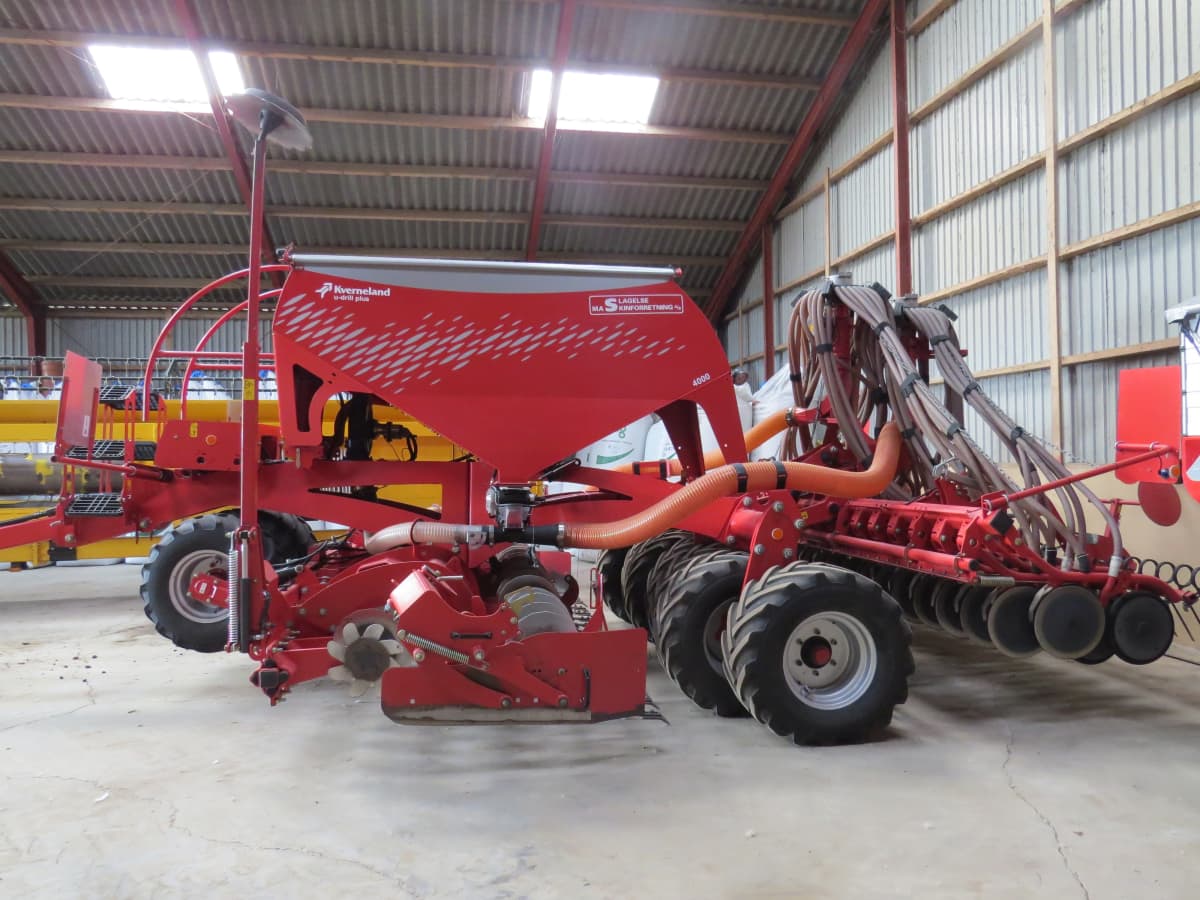
"We lay all the groundwork for our precision farming with our trailed 4-metre Kverneland u-drill Plus seed drill. With the help of Isobus and GPS equipment, we follow the same seed map year after year." The air-assisted Kverneland u-drill Plus seed drill has electric seed feeding and a split seed box, so fertiliser can be filled in one compartment and seed in the other. Two discs open the seed furrow where the fertiliser and seed are placed together. "For example, we apply up to 60 kg nitrogen per hectare for malting barley in an NPK fertiliser."
No remains of animal seed
Another important machine for precision farming at I/S Gammelby is the lift-mounted and Isobus-compatible Kverneland Exacta TL GEOSPREAD fertiliser spreader. The Kverneland Exacta TL GEOSPREAD has a tank capacity of approximately 3.5 tonnes and the spreading width can be adjusted between 12 and 36 metres. At I/S Gammelby, the spreading width is 24 metres.
"We were looking for a fertiliser spreader that can automatically adjust the spreading width when there are wedges in the field, which is the case in all our fields."
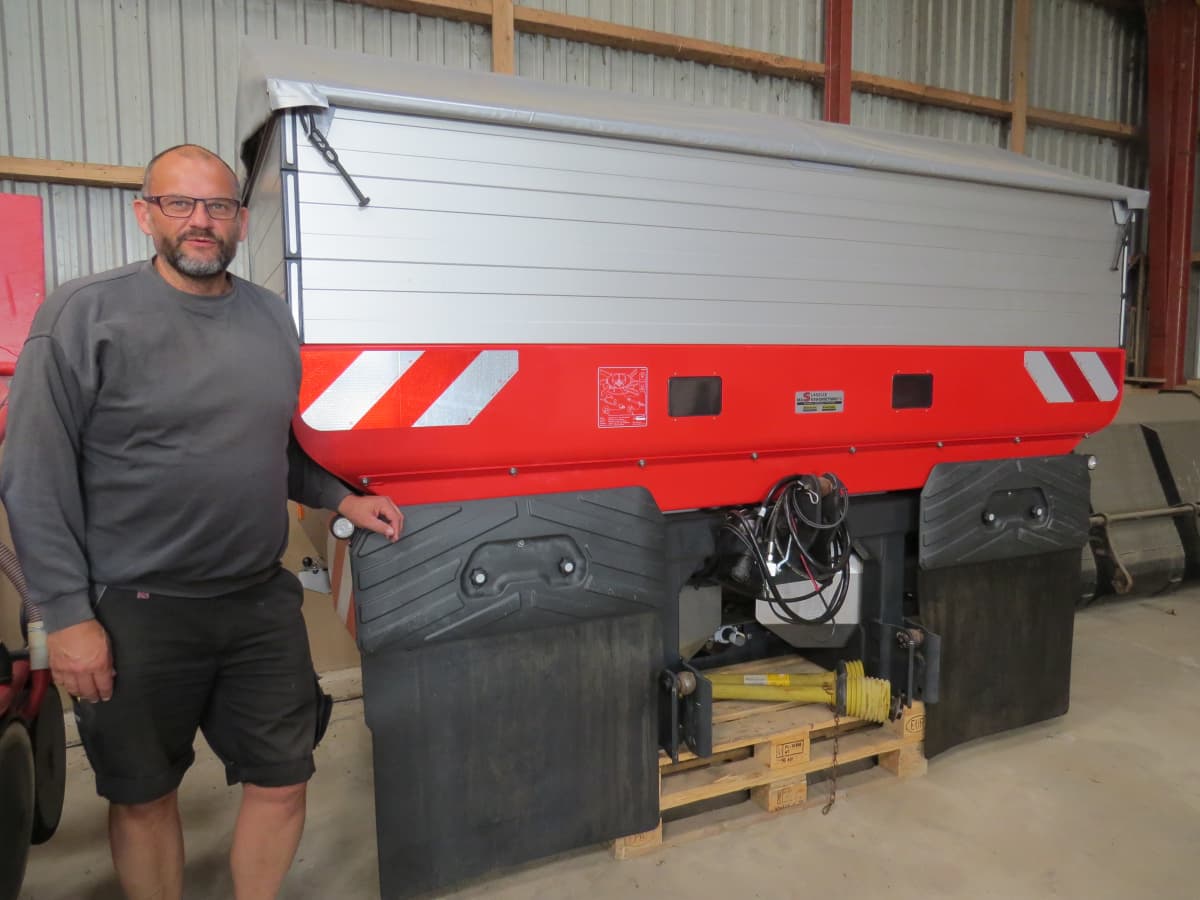
Fertilise according to germination map
"When we give the wheat the first fertilizer in the spring, we follow a germination map from the autumn. This way, we fertilize precisely in relation to the plant mass present," Søren explains. The next application for the wheat is slurry. "When we fertilize the wheat for the third time, we use the latest satellite map, which reflects the situation in the field here and now. In this way, we fertilize as optimally as possible."
Therefore no unnecessarily large amounts of fertiliser is used at I/S Gammelby. Spraying is done with a towed Kverneland iXtrack T4 field sprayer with a 4,600 liter tank and a 24 meter aluminum boom divided into 2-metre sections.
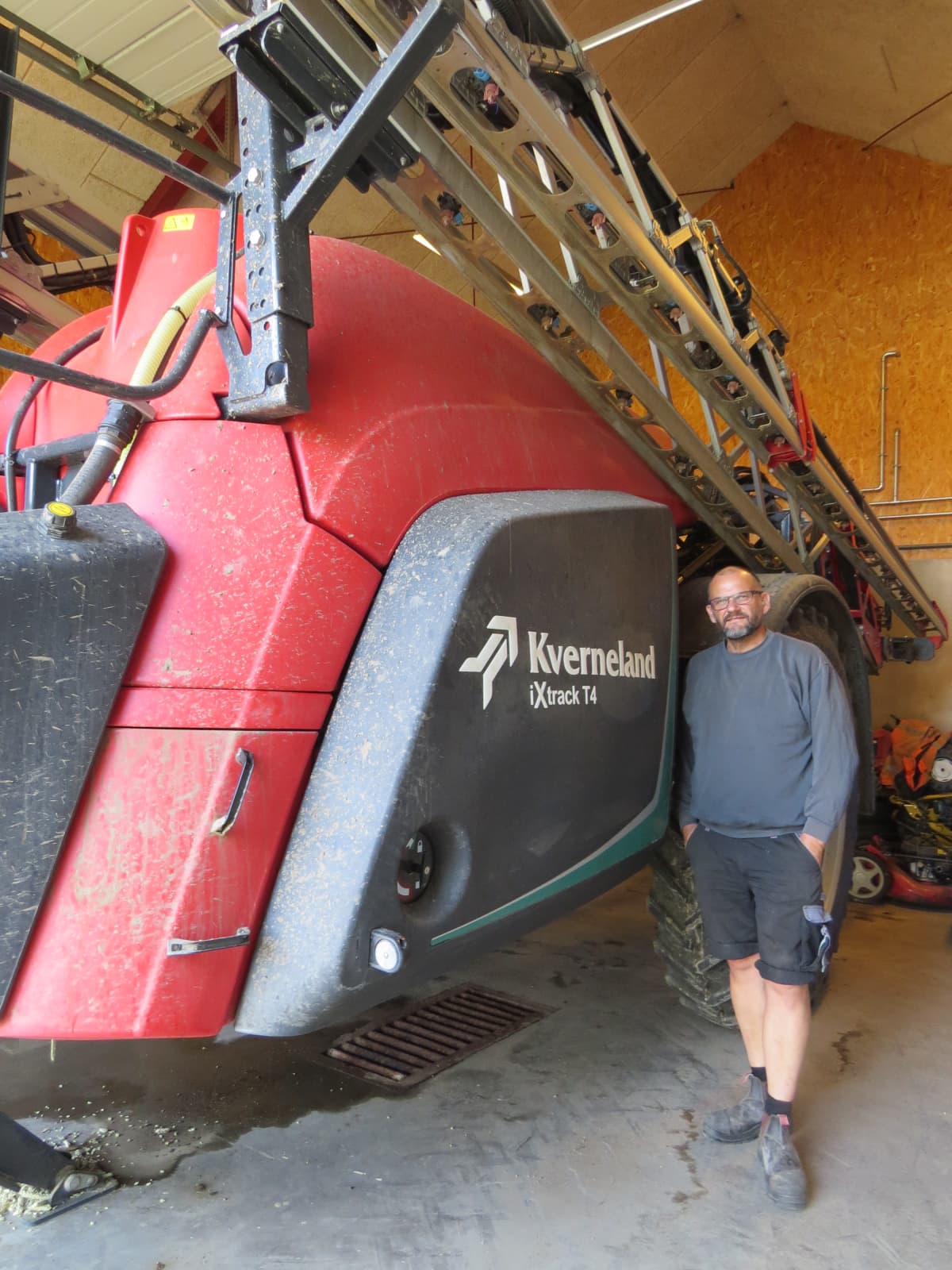
Saves 10 per cent on antifungals
"We save a lot by spraying based on allocation maps. For example, we spray fungicides based on satellite maps, which has reduced our consumption of fungicides by about 10 per cent," says Søren. In addition to the u-drill Plus seed drill, the Kverneland Exacta TL GEOSPREAD fertiliser spreader and the iXtrack T4 field sprayer, the machine hall at I/S Gammelby also houses a number of other Kverneland machines.
Lots of Kverneland
At I/S Gammelby you can also find an older 5-furrow mouldboard plough with variable furrow width, a 7-metre Tiger seedbed harrow, an older 3-metre Compact III seed kit for hollows and other small tasks, a 5-metre Turbo stubble harrow with seed box for sowing catch crops, a flail stripper for seed fields, an old grubber and an old 2-rotor rake for small tasks, typically for horse people.
"Over the years, we have had many machines and tools from Kverneland. They are always well tested, so they work well and reliably in the field," says Søren Gammelby.

